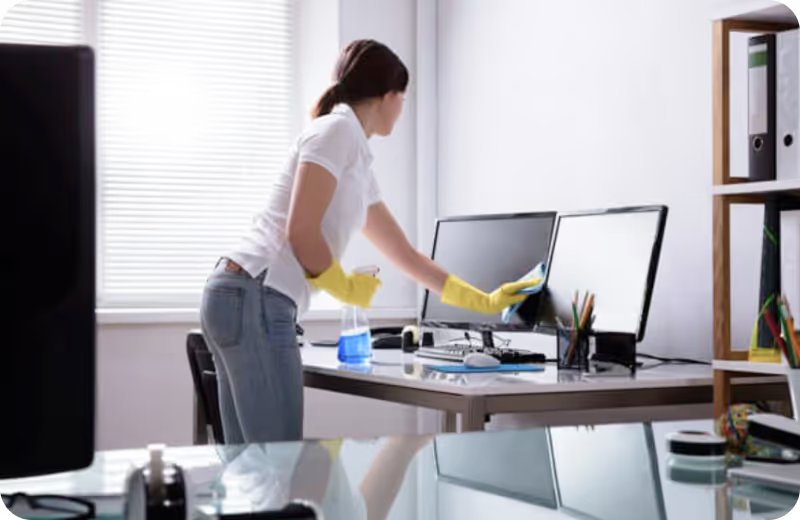
The condensate pump is responsible for collecting and draining out the water formed in the air conditioning system. Drain lines connect to condensate pumps, so cleaning the drain lines is a must when maintaining your condensate pump. As the condensation level rises, the reservoir and the drain pan can overflow, so draining these components is essential as well.
In this guide, we'll walk you through cleaning your condensate pump, including the drain pipes, water reservoir, and the drain pan. You should notice the improved function of your HVAC unit, as well as a more efficient cooling process within your home.
Effects of an Unmaintained AC Condensate Pumps
- Leaking HVAC system;
- Clogged condensate drain line;
- Frozen AC system;
- Ineffective cooling of your home's HVAC system;
- Moldy smell coming from the AC unit;
- Feet smell coming from the AC unit;
- Mosquitoes buzzing around stagnant water in the condensate line.
How to Clean Condensate Pump: A Step-by-step Guide
Step 1: Turn the Power Off
The first step is to block off the power source from your air conditioning system. Cleaning the condensate pump will cause you to come in contact with water, and shutting down the air conditioning system will prevent any accidental electrocutions.
Shutting off your air conditioning unit will also prevent accidental powering on of the HVAC system, which can cause water damage if the drain lines are disconnected. Clean a condensate pump drain line when the power is off.
Step 2: Disconnect the Condensate Tubing
Disconnect the condensate pump drain line from the rest of the HVAC system. The condensate pump drain line is often connected to the reservoir and the drain pan, which you can also clean at the same time.
Step 3: Clean the Condensate Pump Motor
Clean the condensate pump motor, which cannot get wet, with a can of compressed air, and a vacuum cleaner. Use the compressed air to dislodge dirt stuck to the motor, and use a soft brush to scrub out the grime. Take your shop vac, and suction the dirt away from the motor.
Step 4: Dislodge Any Clogs
Next, check for any debris clogging the condensate pump. Look through the drain line, and run water through it. If water easily passes through, then your condensate pump does not have a clog. If water does not pass through at all, or is filling up the drain line faster than it can flow out, then you have a clog in your condensate pump.
To dislodge the clog, take a long stick or brush that fits the width of your condensate drain line, and pass it through the tubing. Gently dislodge the clog, then run water through the drain lines to flush away any remaining debris.
Helpful Tip: If the condensate pump is clogged with dust and debris, then you may want to check your air filters as they may no longer be effectively preventing dust from entering your unit. In this case, clean the air filters as well, and have a professional HVAC technician deep clean your AC system.
Step 5: Brush with Soap and Water
Create a soapy water solution to clean the condensate pump by mixing warm water and dish soap or a mild detergent. Mix well to incorporate. This should remove any grime, oils, and dirt from the condensate pump, and kill bacteria and mold as well.
Take a brush, or place a soft sponge on a stick handle, and scrub the condensate pump drain lines with your soapy water solution. Scrub the interior and exterior of the condensate line, then rinse with plain water. Use the same solution to wash out the pump reservoir, and clean the drain pan as well.
Step 6: Rinse Out the Water Reservoir
Rinse out the pump reservoir as well as the drain pan. Doing so will prevent mold and mildew from forming in condensate pumps, and will remove excess moisture. Use a brush to scrub out any slime that formed around the reservoir and the drain pan, which indicates mildew growth.
Step 7: Let Dry, and Reconnect
Let all the components dry completely, then reconnect the different parts to the air conditioning system. Restore power to the HVAC unit, and test to see if cleaning the condensate pump improved the cooling efficiency of your unit.
Keep Your HVAC Clean
Proper cleaning and maintenance will ensure the longevity of your HVAC unit. You should have your air conditioning system cleaned at least once every 4 to 6 months for the best care. Our professional HVAC technicians at Luce have the expertise to clean, maintain, and fix any problem you have with your unit so you can continue to enjoy its cooling comfort!
Check out our blog on other tips to maintain your HVAC system!


























